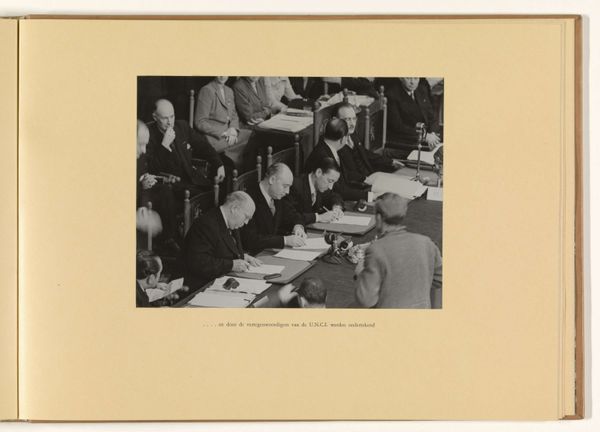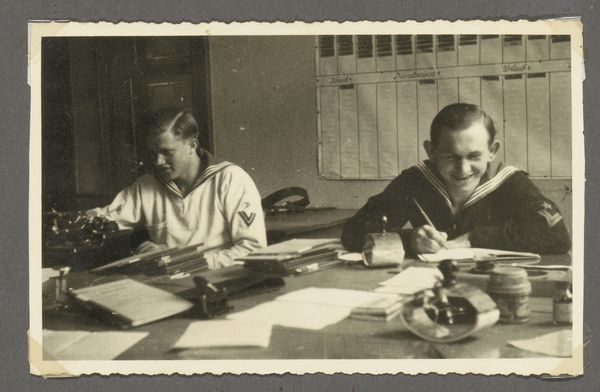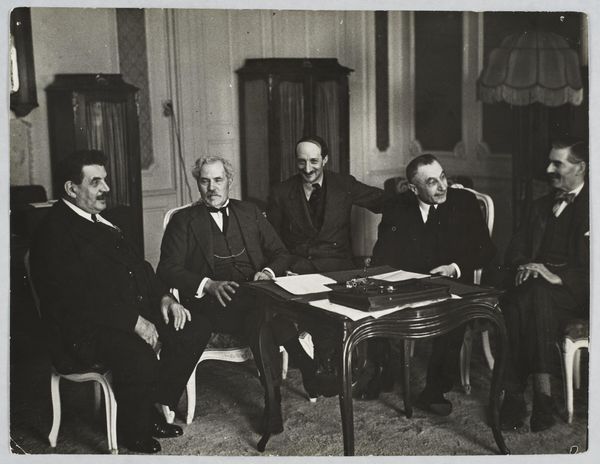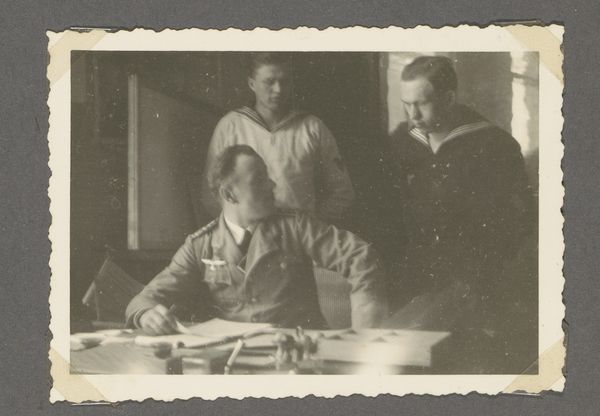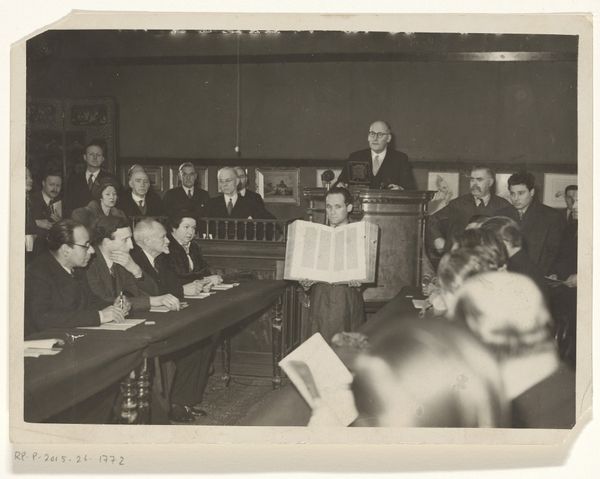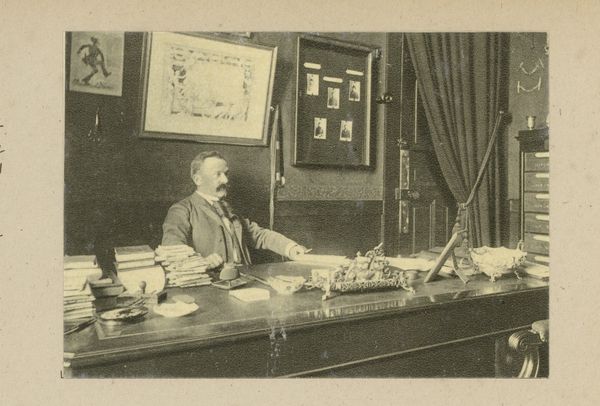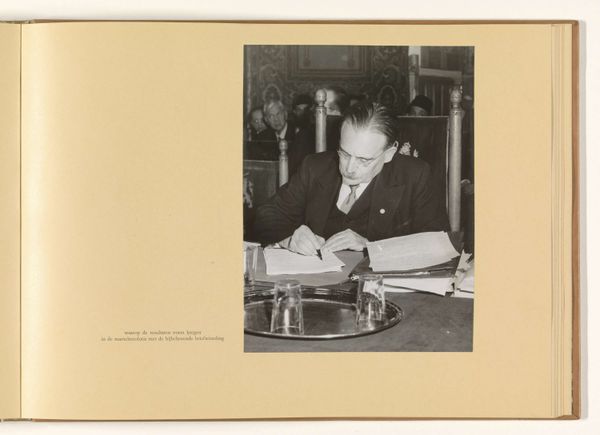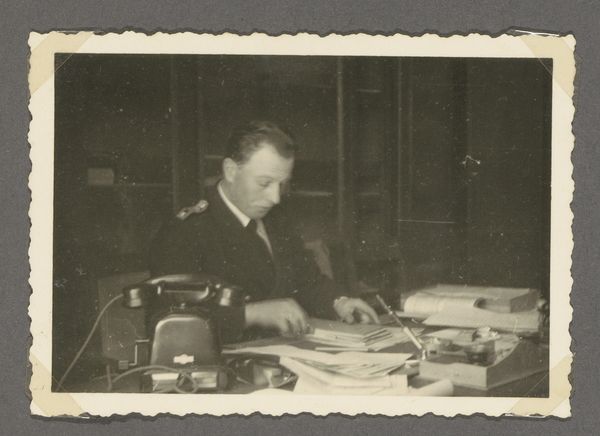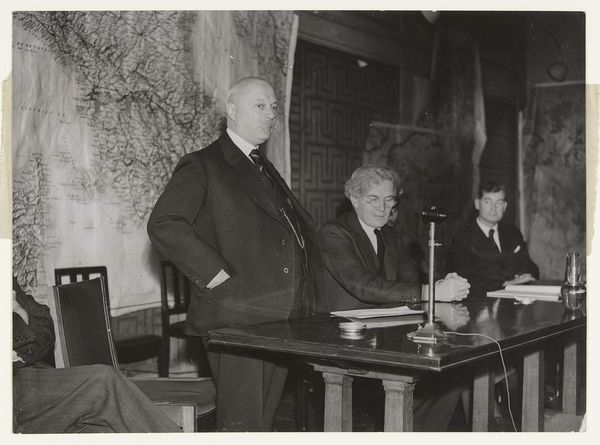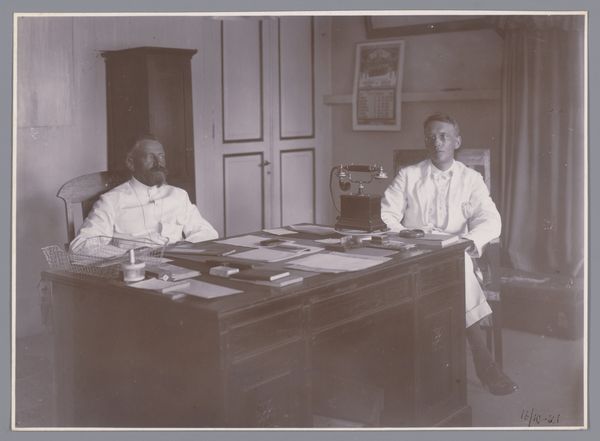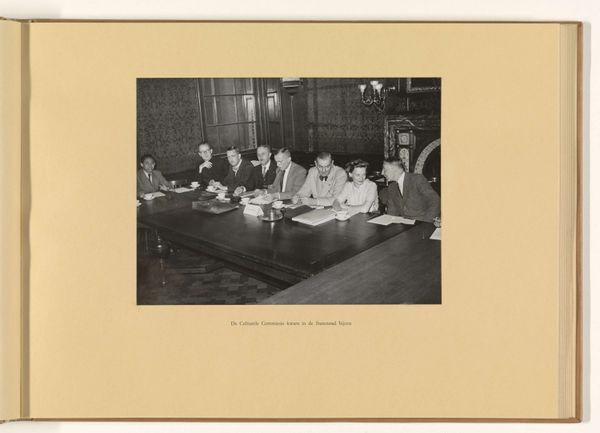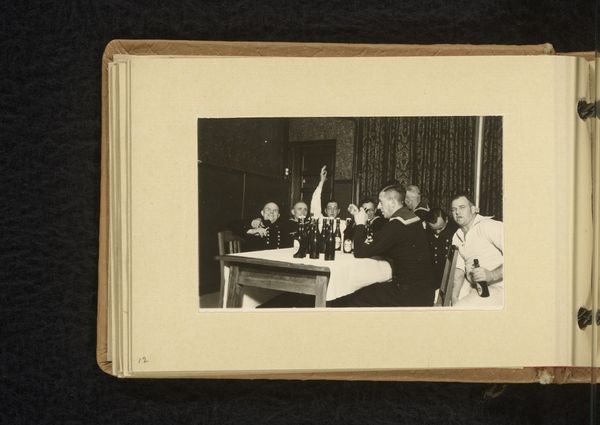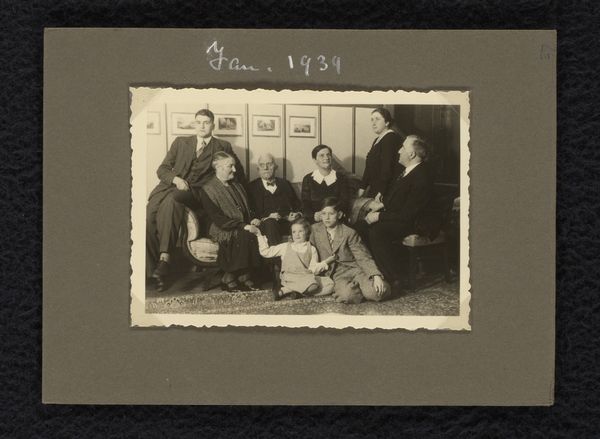
photography
#
portrait
#
photography
#
historical fashion
#
group-portraits
Dimensions: height 160 mm, width 220 mm, height 240 mm, width 320 mm
Copyright: Rijks Museum: Open Domain
Curator: This photograph, taken in 1924, presents us with a group portrait, its original title being "Groepsportret van het leidiggevend team." The artist remains anonymous. Editor: It's somber, isn't it? The sepia tones give it a gravity that pulls you in. Everyone seems so focused, almost burdened by their task. There is a serious concentration visible. Curator: It captures the mood of the time. Group portraits like these served a vital function, reinforcing institutional hierarchies and commemorating collective achievements. They speak of the ambition and the visual language of progress in that era. Editor: Visually, there's an interesting contrast. You have three men deeply engrossed over a document, presumably blueprints judging by their postures and focus. But behind them, the other two stand almost as silent observers or sentinels. Are they internal, perhaps political factions emerging? The setting contributes, too – a window is visible, but the overall image stays closed. Curator: Those standing men represent a sort of power held in reserve; a silent yet vital sanctioning that would legitimize this project represented in documents. We’ve been speaking about collective achievements, this sort of group representation suggests some of the challenges associated with early organizational strategy when trying to solidify brand identity as visual metaphor for economic power. Editor: I see how the choice of clothing in that historical period—those dark suits and serious expressions—it communicates purpose and perhaps the pressure to maintain certain outward symbols of professional stature. This imagery carries a deep cultural and social resonance tied with history. Curator: Absolutely. Every detail – the fall of light, the subtle body language. What initially presents itself as a rather standard group shot quickly morphs into an interesting commentary on dynamics of the professional spaces during that period. It invites an examination beyond the surface of mere appearances, pointing instead towards questions concerning legacy and governance. Editor: It's a compelling reminder that images are not mere representations. Thank you. Curator: Indeed. A worthwhile historical moment and portrait of collaborative achievement to sit with us today, to be considered again, perhaps.
Comments
No comments
Be the first to comment and join the conversation on the ultimate creative platform.
